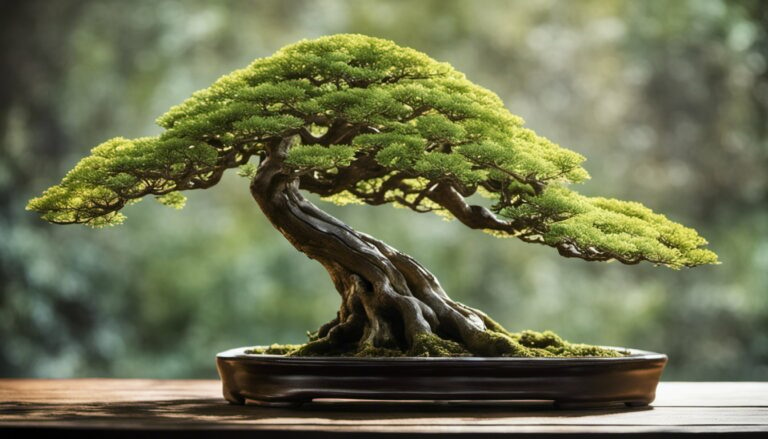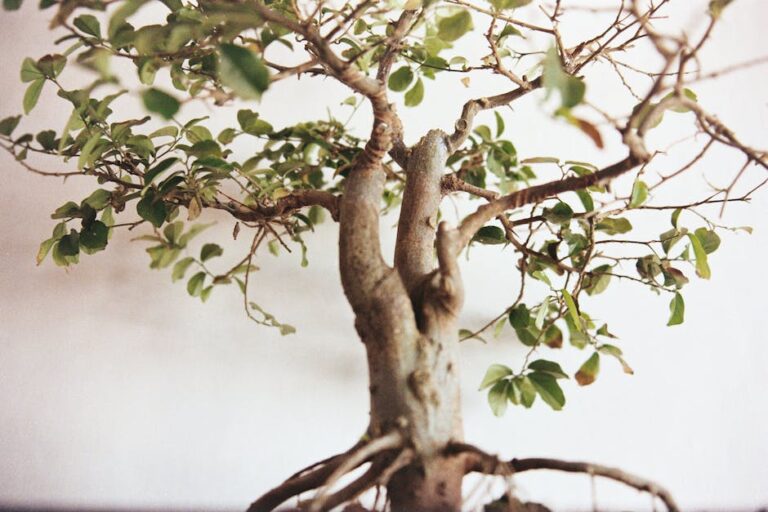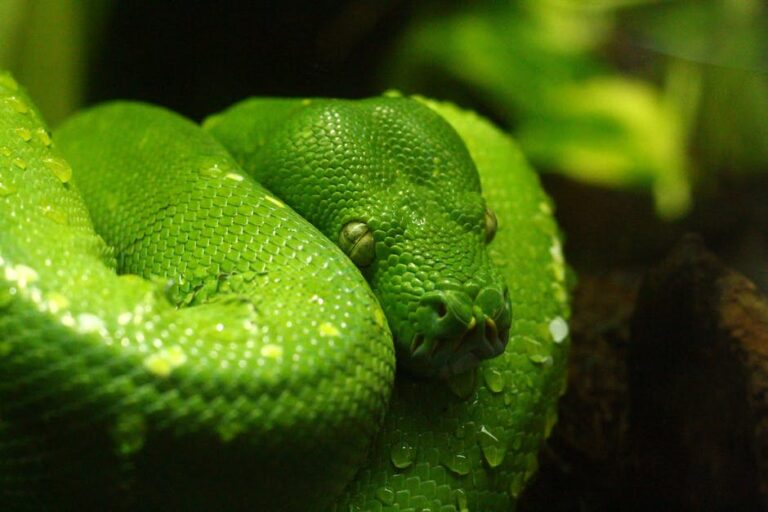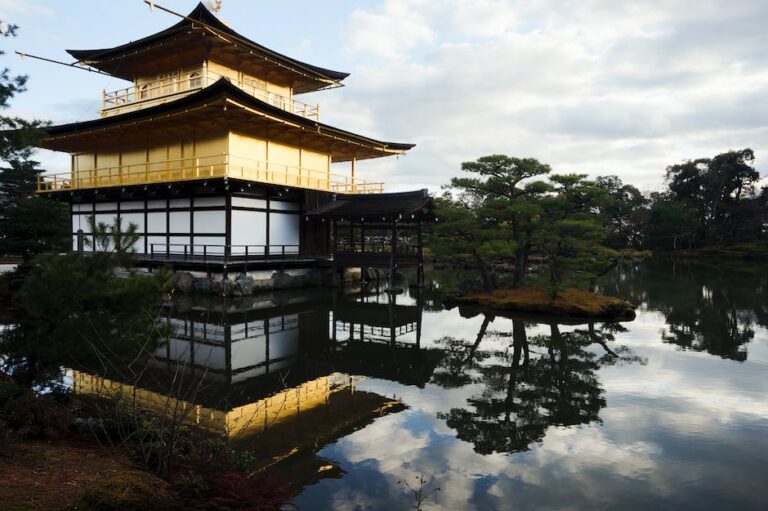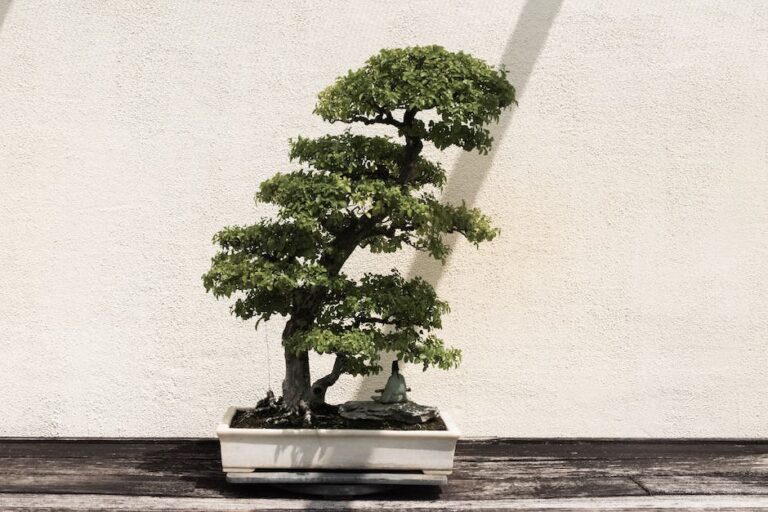How Often Should I Mist My Bonsai Tree
-
Table of Contents hide
Table of Contents
- The Importance of Regular Mistings for Bonsai Trees
- Mist Frequency: Finding the Right Balance for Your Bonsai Tree
- Mist or Not? Factors to Consider When Deciding How Often to Mist Your Bonsai Tree
- Mist Techniques: Tips and Tricks for Properly Misting Your Bonsai Tree
- Mist and Humidity: Understanding the Relationship for Optimal Bonsai Tree Health
- Mist Mistakes to Avoid: Common Errors When Misting Bonsai Trees
- Expert Advice: Recommendations on How Often to Mist Your Bonsai Tree
- Conclusion
Misting is an important aspect of bonsai tree care as it helps to maintain the proper humidity levels for the tree. However, the frequency of misting can vary depending on various factors such as the species of the bonsai tree, the climate, and the environment it is kept in.
The Importance of Regular Mistings for Bonsai Trees
Bonsai trees are delicate and beautiful creations that require special care to thrive. One important aspect of caring for a bonsai tree is providing it with regular mistings. Misting is the process of spraying a fine mist of water onto the leaves and branches of the tree. This simple act can have a significant impact on the health and vitality of your bonsai tree.
Regular mistings are essential for bonsai trees because they help to create the ideal environment for growth. Bonsai trees are typically grown indoors, where the air tends to be dry. This lack of humidity can cause the leaves and branches of the tree to dry out, leading to wilting and even death. By misting your bonsai tree regularly, you can help to increase the humidity around the tree, providing it with the moisture it needs to thrive.
But how often should you mist your bonsai tree? The answer to this question depends on several factors, including the type of tree, the size of the tree, and the environment in which it is being grown. As a general rule, most bonsai trees benefit from misting once or twice a day. However, it’s important to monitor the moisture levels of your tree and adjust your misting schedule accordingly.
One way to determine if your bonsai tree needs misting is to check the moisture level of the soil. Stick your finger about an inch into the soil. If it feels dry, it’s time to mist your tree. Another way to determine if your bonsai tree needs misting is to observe the leaves. If they appear dry or wilted, it’s a clear sign that your tree needs more moisture.
When misting your bonsai tree, it’s important to use the right technique. Fill a spray bottle with water and adjust the nozzle to create a fine mist. Hold the bottle about a foot away from the tree and spray the leaves and branches evenly. Be sure to avoid spraying the soil, as this can lead to overwatering.
In addition to providing much-needed moisture, misting your bonsai tree also has other benefits. It helps to remove dust and debris from the leaves, keeping them clean and healthy. Misting also helps to prevent pests, such as spider mites, from infesting your tree. These tiny insects thrive in dry environments, so by increasing the humidity around your bonsai tree, you can help to keep them at bay.
In conclusion, regular mistings are crucial for the health and vitality of your bonsai tree. By providing your tree with the moisture it needs, you can create the ideal environment for growth. Remember to monitor the moisture levels of your tree and adjust your misting schedule accordingly. With proper care and attention, your bonsai tree will thrive and bring you joy for years to come.
Mist Frequency: Finding the Right Balance for Your Bonsai Tree
Bonsai trees are delicate and require special care to thrive. One important aspect of caring for a bonsai tree is misting. Misting helps to maintain the proper humidity levels around the tree, which is crucial for its overall health. But how often should you mist your bonsai tree? Finding the right balance is key.
First and foremost, it’s important to understand why misting is necessary for bonsai trees. Bonsai trees are typically grown in small pots, which means they have limited access to water and nutrients. Misting helps to compensate for this by providing additional moisture to the tree’s foliage. It also helps to prevent the leaves from drying out, especially in dry indoor environments.
The frequency of misting your bonsai tree depends on several factors. One important factor is the type of tree you have. Different species of bonsai trees have different moisture requirements. For example, tropical bonsai trees, such as the Ficus or the Chinese Elm, thrive in high humidity environments and may require misting more frequently. On the other hand, coniferous bonsai trees, like the Juniper or the Pine, prefer drier conditions and may not need to be misted as often.
Another factor to consider is the climate in which you live. If you live in a dry climate, you may need to mist your bonsai tree more frequently to compensate for the lack of natural humidity. Conversely, if you live in a humid climate, you may not need to mist your tree as often, as the natural humidity in the air will provide sufficient moisture.
The time of year also plays a role in determining how often you should mist your bonsai tree. During the summer months, when temperatures are higher and the air is drier, you may need to mist your tree more frequently. In contrast, during the winter months, when indoor heating can dry out the air, you may need to mist your tree less often.
To find the right balance for your bonsai tree, it’s important to observe the tree closely. Pay attention to the condition of the leaves and the overall appearance of the tree. If the leaves start to look dry or wilted, it may be a sign that you need to mist more frequently. On the other hand, if the leaves appear overly wet or if you notice any signs of mold or fungus, you may be misting too often.
In general, misting your bonsai tree once or twice a day is a good starting point. However, it’s important to adjust the frequency based on the specific needs of your tree and the conditions in which it is growing. Remember, it’s always better to underwater than to overwater your bonsai tree, as overwatering can lead to root rot and other issues.
In conclusion, misting is an important aspect of caring for a bonsai tree. Finding the right balance in misting frequency is crucial for the health and well-being of your tree. Consider the type of tree, the climate, and the time of year when determining how often to mist. And always remember to observe your tree closely and adjust the misting frequency as needed. With proper care and attention, your bonsai tree will thrive and bring you joy for years to come.
Mist or Not? Factors to Consider When Deciding How Often to Mist Your Bonsai Tree
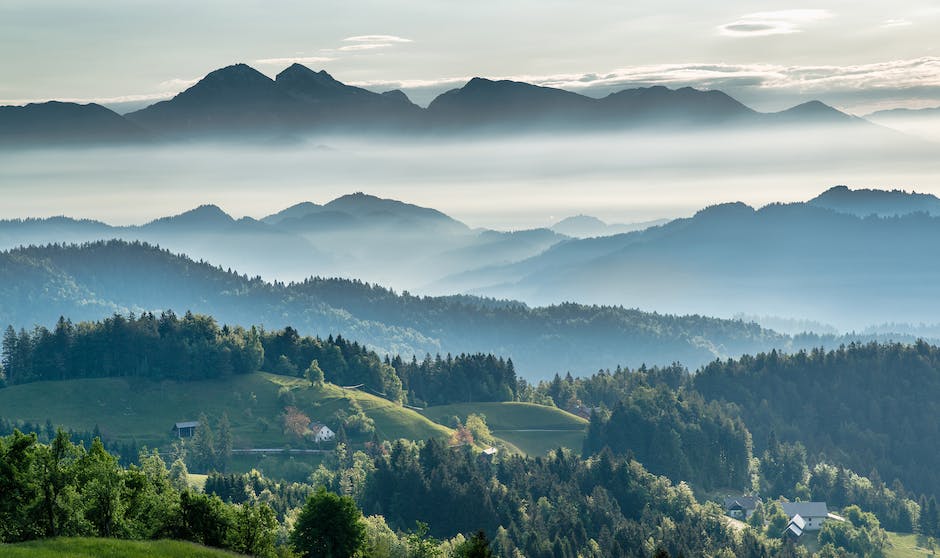
Bonsai trees are delicate and require special care to thrive. One aspect of caring for a bonsai tree is misting it regularly. Misting involves spraying a fine mist of water onto the leaves and branches of the tree. This helps to increase humidity around the tree and keep it hydrated. However, the question arises: how often should you mist your bonsai tree?
The frequency of misting your bonsai tree depends on several factors. Firstly, you need to consider the type of bonsai tree you have. Different species have different moisture requirements. Some bonsai trees, such as tropical varieties, thrive in high humidity environments and may require misting more frequently. On the other hand, certain species, like conifers, prefer drier conditions and may not need to be misted as often. It is important to research the specific needs of your bonsai tree to determine the appropriate misting schedule.
Another factor to consider is the climate in which you live. If you reside in a dry or arid region, you may need to mist your bonsai tree more frequently to compensate for the lack of natural humidity. Conversely, if you live in a humid area, you may not need to mist your tree as often. It is essential to take into account the environmental conditions in your location when deciding how often to mist your bonsai tree.
Furthermore, the time of year can also influence the misting frequency. During the hot summer months, when temperatures are high and the air is dry, your bonsai tree may require more frequent misting to prevent dehydration. In contrast, during the cooler winter months, when indoor heating can dry out the air, misting may be necessary to maintain adequate moisture levels. Adjusting your misting schedule according to the seasons can help ensure the health and vitality of your bonsai tree.
In addition to these factors, it is crucial to observe your bonsai tree closely for signs of moisture stress. If the leaves appear wilted or the soil feels dry to the touch, it is an indication that your tree needs more water. Misting can be an effective way to provide additional moisture to your bonsai tree in such situations. However, it is important not to overdo it. Excessive misting can lead to fungal diseases or root rot. It is always better to err on the side of caution and mist less frequently than to risk overwatering your bonsai tree.
To mist your bonsai tree effectively, use a spray bottle with a fine mist setting. This will ensure that the water droplets are small and gentle, mimicking the natural dew that forms on leaves in the morning. Hold the spray bottle about 12 inches away from the tree and mist the leaves and branches evenly. Avoid spraying directly onto the soil, as this can lead to waterlogging.
In conclusion, the frequency of misting your bonsai tree depends on various factors, including the type of tree, climate, time of year, and signs of moisture stress. By considering these factors and observing your tree closely, you can determine the appropriate misting schedule to keep your bonsai tree healthy and thriving. Remember, misting is just one aspect of bonsai tree care, so be sure to provide your tree with proper sunlight, water, and nutrients to ensure its overall well-being.
Mist Techniques: Tips and Tricks for Properly Misting Your Bonsai Tree
How Often Should I Mist My Bonsai Tree
Misting is an essential part of caring for your bonsai tree. It helps to maintain the proper humidity levels and keeps the foliage healthy and vibrant. However, misting too often or too little can have adverse effects on your bonsai. So, how often should you mist your bonsai tree? Let’s explore some misting techniques, tips, and tricks to help you properly care for your bonsai.
First and foremost, it’s important to understand that the frequency of misting your bonsai tree depends on various factors such as the species of the tree, the climate you live in, and the time of year. Generally, most bonsai trees benefit from misting once or twice a day, especially during the hot summer months when the air tends to be dry. However, it’s crucial to observe your bonsai tree closely and adjust the misting frequency accordingly.
One way to determine if your bonsai tree needs misting is by checking the moisture level of the soil. Stick your finger about an inch into the soil, and if it feels dry, it’s a good indication that your bonsai tree needs misting. On the other hand, if the soil feels moist, you can reduce the frequency of misting. Remember, over-misting can lead to root rot and other fungal diseases, so it’s essential to strike the right balance.
Another factor to consider when misting your bonsai tree is the time of day. Misting in the morning or evening is generally recommended as the temperature is cooler, and the water has a better chance to be absorbed by the foliage before evaporating. Avoid misting during the hottest part of the day as the water droplets can act as magnifying glasses and burn the leaves.
When misting your bonsai tree, it’s crucial to use the right technique. Hold the spray bottle about a foot away from the tree and mist the foliage evenly, making sure to cover both the upper and lower surfaces of the leaves. Avoid misting the trunk and soil as it can lead to excessive moisture and promote the growth of mold and fungi. Additionally, using room temperature or lukewarm water is preferable as cold water can shock the tree and hot water can scorch the leaves.
In addition to regular misting, you can also create a humidity tray for your bonsai tree. Simply place a tray filled with water and pebbles beneath the bonsai pot. As the water evaporates, it increases the humidity around the tree. This is especially beneficial during the winter months when indoor heating can cause the air to become dry.
Lastly, it’s important to mention that misting alone is not enough to keep your bonsai tree healthy. Proper watering, fertilizing, and pruning are equally important aspects of bonsai care. So, make sure to follow a comprehensive care routine to ensure the overall well-being of your bonsai tree.
In conclusion, misting your bonsai tree is a vital part of its care routine. The frequency of misting depends on various factors, and it’s crucial to observe your tree closely to determine its needs. Remember to mist in the morning or evening, use the right technique, and avoid over-misting. By following these tips and tricks, you can ensure that your bonsai tree thrives and remains a beautiful and cherished addition to your home or garden.
Mist and Humidity: Understanding the Relationship for Optimal Bonsai Tree Health
Bonsai trees are delicate and require special care to thrive. One important aspect of caring for a bonsai tree is maintaining the right level of humidity. Mist is often used to increase humidity around the tree, but how often should you mist your bonsai tree? Understanding the relationship between mist and humidity is key to ensuring optimal health for your bonsai tree.
Misting your bonsai tree can help increase humidity levels, which is crucial for its overall well-being. Bonsai trees are typically grown in small pots, which can make it challenging for them to retain moisture. By misting the tree, you are providing it with a source of moisture that can help compensate for the limited water retention capacity of the potting soil.
However, misting your bonsai tree too frequently can have negative consequences. Excessive misting can lead to overwatering, which can cause root rot and other issues. It is important to strike a balance and find the right frequency for misting your bonsai tree.
The ideal frequency of misting your bonsai tree depends on several factors, including the species of the tree, the climate you live in, and the current humidity levels. Some bonsai trees, such as tropical varieties, require higher humidity levels and may benefit from more frequent misting. On the other hand, trees that are native to drier climates may not require as much misting.
A good starting point is to mist your bonsai tree once or twice a day. This will provide a consistent source of moisture without overwhelming the tree. However, it is important to monitor the tree closely and adjust the misting frequency as needed. If you notice that the soil is consistently damp or the leaves are turning yellow, it may be a sign that you are misting too often. On the other hand, if the soil is dry and the leaves are wilting, you may need to increase the frequency of misting.
In addition to misting, there are other ways to increase humidity around your bonsai tree. Placing a tray filled with water near the tree can help create a microclimate with higher humidity. You can also use a humidity tray, which is a shallow tray filled with water that the bonsai pot sits on. As the water evaporates, it increases the humidity around the tree.
It is important to note that misting alone may not be sufficient to maintain optimal humidity levels for your bonsai tree. Factors such as air circulation, temperature, and the presence of other plants in the vicinity can also affect humidity levels. It is important to create a suitable environment for your bonsai tree by considering all these factors.
In conclusion, misting your bonsai tree is an effective way to increase humidity and promote its overall health. However, it is important to find the right balance and adjust the misting frequency based on the specific needs of your tree. By understanding the relationship between mist and humidity, you can ensure that your bonsai tree thrives and brings you joy for years to come.
Mist Mistakes to Avoid: Common Errors When Misting Bonsai Trees
Misting is an important aspect of caring for bonsai trees, as it helps to maintain the proper humidity levels that these delicate plants require. However, misting can be a bit tricky, and there are some common mistakes that many bonsai enthusiasts make when it comes to this task. In this article, we will discuss these misting mistakes to avoid, and provide some helpful tips on how often you should mist your bonsai tree.
One of the most common mistakes that people make when misting their bonsai trees is misting too often. While it is important to provide adequate humidity for your bonsai, misting too frequently can actually do more harm than good. Excessive misting can lead to the development of fungal diseases, as the constant moisture can create a breeding ground for these harmful organisms. It is important to strike a balance and mist your bonsai tree only when necessary.
On the other hand, another mistake that people make is not misting their bonsai trees enough. Bonsai trees require a certain level of humidity to thrive, and if they are not provided with enough moisture, they can suffer from dehydration. This can lead to wilting leaves, stunted growth, and even death in severe cases. It is important to monitor the humidity levels in your bonsai’s environment and mist accordingly to ensure that it receives the moisture it needs.
So, how often should you mist your bonsai tree? The frequency of misting will depend on several factors, including the species of bonsai, the climate you live in, and the current humidity levels. As a general rule of thumb, misting your bonsai tree once or twice a day is usually sufficient. However, it is important to pay attention to the needs of your specific bonsai and adjust the misting frequency accordingly.
In addition to the frequency of misting, it is also important to consider the time of day when misting your bonsai tree. Misting in the morning is generally recommended, as this allows the leaves to dry off before the cooler evening temperatures set in. Misting in the evening can lead to prolonged moisture on the leaves, which can increase the risk of fungal diseases.
When misting your bonsai tree, it is important to use the right technique. Avoid misting the leaves from a distance, as this can result in uneven coverage and wastage of water. Instead, get up close to the tree and mist the leaves gently, ensuring that each leaf receives a fine mist. This will help to create a more even distribution of moisture and prevent water from pooling on the leaves.
In conclusion, misting is an important aspect of caring for bonsai trees, but it is important to avoid common misting mistakes. Misting too often or too little can have negative effects on your bonsai’s health, so it is important to find the right balance. Misting once or twice a day, using the proper technique, and paying attention to the needs of your specific bonsai tree will help to ensure that it receives the proper amount of moisture and thrives in its environment.
Expert Advice: Recommendations on How Often to Mist Your Bonsai Tree
Bonsai trees are delicate and require special care to thrive. One aspect of their care that often confuses bonsai enthusiasts is how often to mist their trees. Misting is the process of spraying a fine mist of water onto the leaves and branches of the tree. It helps to increase humidity around the tree and keep the foliage healthy. In this article, we will provide expert advice and recommendations on how often to mist your bonsai tree.
The frequency of misting your bonsai tree depends on several factors, including the species of the tree, the climate you live in, and the current weather conditions. Generally, it is recommended to mist your bonsai tree once or twice a day. However, it is important to observe your tree closely and adjust the misting frequency accordingly.
If you live in a hot and dry climate, you may need to mist your bonsai tree more frequently. The dry air can quickly dehydrate the tree, causing the leaves to wilt and the overall health of the tree to decline. In such cases, misting your bonsai tree two to three times a day may be necessary to maintain the desired level of humidity.
On the other hand, if you live in a humid climate, you may not need to mist your bonsai tree as often. The natural humidity in the air can provide sufficient moisture for the tree. In such cases, misting your bonsai tree once a day or every other day should be enough to keep it healthy.
Another factor to consider is the species of your bonsai tree. Some species, such as tropical bonsai trees, require higher humidity levels than others. These trees typically have larger leaves and are native to regions with high humidity. Therefore, misting them more frequently, even up to three times a day, may be necessary to create the ideal environment for their growth.
Conversely, species that are native to arid regions, such as desert bonsai trees, may not require as much misting. These trees have adapted to survive in dry conditions and can tolerate lower humidity levels. Misting them once a day or every other day should be sufficient to meet their moisture needs.
In addition to considering the climate and species of your bonsai tree, it is important to pay attention to the current weather conditions. During hot and dry periods, such as summer, you may need to increase the frequency of misting. Conversely, during cooler and more humid periods, such as winter, you may need to reduce the frequency of misting to prevent overwatering and fungal diseases.
Remember, misting is just one aspect of bonsai tree care. It should be complemented with proper watering, fertilizing, and pruning to ensure the overall health and vitality of your tree. Additionally, it is important to use clean water and avoid misting during the hottest part of the day to prevent leaf burn.
In conclusion, the frequency of misting your bonsai tree depends on various factors, including the species of the tree, the climate you live in, and the current weather conditions. Generally, misting once or twice a day is recommended, but it is important to observe your tree closely and adjust the misting frequency accordingly. By providing the right amount of moisture, you can help your bonsai tree thrive and create a beautiful and healthy miniature landscape.
Conclusion
In conclusion, the frequency of misting a bonsai tree depends on various factors such as the species of the tree, the climate, and the humidity levels. Generally, misting once or twice a day is sufficient for most bonsai trees. However, it is important to monitor the moisture levels of the soil and adjust the misting frequency accordingly to ensure the tree receives adequate hydration without causing waterlogging or other issues.

